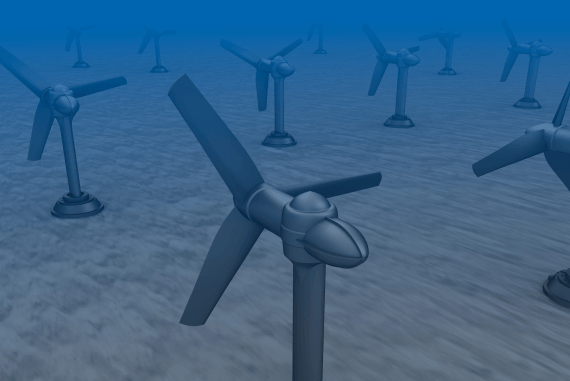- Home ››
- Health and Safety Training ››
- Environmental Health and Safety ››
- Wave and Tidal Power
Wave and Tidal Power

Although both rely on the movement of the sea, wave power is distinctly different from tidal power. These differences are outlined below, with a description explaining what each one is, and some advantages and disadvantages for each particular method of electricity generation.
Whilst there are some disadvantages associated with each - as there are with all forms of renewable energy generation - the overall benefits over the long term always outweigh the negatives in terms of protecting the environment. Both methods though produce clean, renewable energy which might otherwise have to be produced from the burning of fossil fuels.
Tidal Power
Whereas wave power generates electricity in small, continual amounts through the rising and falling of the waves pushing air in and out of a turbine, tidal power produces electricity in a much great amount, but only as the tides ebb and flow. It does this in one of two ways:
Tidal Stream Turbines
These work on the same principle as wind turbines, but instead of airflow turning the propeller blades they are rotated by the flow of water as the tide comes in or recedes (whilst some may be fixed in place, some tidal turbines can rotate 180 degrees to take advantage of the tide coming in and going out).
Tidal turbines are one of the few examples of renewable sources of energy which are not visually intrusive as they will be hidden beneath the water, which unfortunately cannot be said of their wind power relatives on land which have to be tall to capture the wind, and so can be seen for miles around.
Tidal Barriers
Tidal barriers are built right across a river estuary. The flow of water through small gaps as the tide goes in or out drives a turbine which generates the electricity. Lock gates allow ships to pass so that the tidal barrier does not completely block up the waterway with it being built right across.
Unlike tidal turbines, tidal barriers have large sections built out of the water which means that they can spoil the look of the area.
Common Disadvantages
For both types of tidal power, the initial cost can be high to build all of the necessary structures. Although in reality all forms of electricity generation are expensive undertakings which take large amounts of time and money to create. Once up and running though, both tidal turbines and barriers require no fuel to be bought as the source of energy is free and unlimited.
Another disadvantage that both have is the potential negative environmental impact upon fish and other aquatic creatures living in the water, particularly tidal barriers which can block the progress of migrating salmon or cause injury and death to any creatures unfortunate enough to become entangled in the underwater turbine.
The underwater location makes installation and maintenance of the equipment more difficult, time consuming and costly than it would do if it were out on dry land where it is easier to get to. Also related to location, electricity generation reliant upon tidal energy can only be cited in certain locations where it can take advantage of an incoming or outgoing tide, which means other forms of renewable energy must also be built if the total is ever to make a serious dent in the reliance upon high-polluting fossil fuel-burning power stations.
Wave Power
Although both rely on the movement of the sea, wave power is distinctly different from tidal power. Wave power makes use of the rising and falling of waves in an air chamber to force the trapped air up through a turbine, which produces electricity. Just like squeezing a manual air pump forces a flow of air outwards, wave power works on the same principle, with the rising wave acting like the pressing down (compression) of the pump and the flow of air being directed over the blades of a turbine rather than just outwards into a ball or airbed. Unlike balls and airbeds which only want air to go inwards, wave power facilities make use of air being forced through the turbine and back the other way too as the wave falls and air re-enters the chamber.
Advantages of Wave Power
Wave power does not require any source of fuel, being powered solely by the natural movement of the waves. This means there are no harmful emissions being released that can be damaging for the environment, as well as the health and wellbeing of all living creatures on the planet as the atmosphere becomes polluted or leads to increased climate change.
This renewable source of electricity generation does not rely upon a finite supply of fuel such as oil, coal or gas which makes this natural form of power generation viable for a very long time, i.e. as long as there are waves in the ocean!
These waves also continue every minute of every day, which allows the wave power station to operate and generate electricity continuously as well without the need to shut down and re-start operations. This is a distinct advantage over another type of renewable energy, solar power, which is unable to generate any electricity once the sun goes down and the skies become dark.
Disadvantages of Wave Power
Like most other forms of renewable energy which harness and utilise the power of nature, there will be an environmental impact as the equipment designed to "capture" this energy needs to be built to a size and form which can carry out this function.
As far as wave power is concerned, air chambers and the turbines will need to be built on the shore which can not only interfere with the habitat of local wildlife but can be visually intrusive for local residents and visitors to the area.
Cost will also play a part, as it does with most projects, and those in charge of the money will have to decide whether the expense of building the project is worth it in terms of the electricity that is generated.
Conclusion
Wave and tidal power is a relatively simple method of producing electricity which would otherwise be produced from a power station burning a non-renewable source of fuel.
Like all sources of energy generation there will be disadvantages and negative aspects. But the overall benefit to the local environment, and the planet as a whole, from producing electricity from wave, tidal and other renewable sources will be greater than the negative impacts.

